Explosion and Pollutant Dispersion of Oil Storage Tank
$140.00 $70.00 Student Discount
- The problem numerically simulates the effects of the oil tank detonation process in an urban area and the pollutant emission using ANSYS Fluent software.
- We design the 3-D model with the Design Modeler software.
- We mesh the model with ANSYS Meshing software, and the element number equals 1746979.
- We use the Species Transport model to define CO2, SO2, NO2, CO, H2O, C, and air.
To Order Your Project or benefit from a CFD consultation, contact our experts via email (info@mr-cfd.com), online support tab, or WhatsApp at +44 7443 197273.
There are some Free Products to check our service quality.
If you want the training video in another language instead of English, ask it via info@mr-cfd.com after you buy the product.
Description
The explosion of Oil Storage Tanks, Pollutant Dispersion CFD Simulation, ANSYS Fluent Training
The present problem simulates the Explosion and Pollutant Dispersion of an Oil Storage Tank in an urban area by ANSYS Fluent software.
In fact, in areas with oil reservoirs, one of the potential dangers is explosion. The explosion of these oil tanks can release many pollutants such as carbon dioxide into the environment. Suppose there are residential areas and industrial units around the oil reservoirs in the mentioned area.
In that case, the spread of these pollutants from the explosion and their transfer to the surrounding environment can be very dangerous and affect people’s lives.
The present model is designed in three dimensions using Design Modeler software. The model includes 6.6 km long, 4.6 km wide, and a 200 m high computational domain.
There is an area for oil reservoirs and several areas for residential or industrial areas. In the special area of oil tanks, 18 cylindrical oil tanks are drawn.
The meshing has been done using ANSYS Meshing software, and the mesh type is unstructured. The element number is 1746979.
Explosion Methodology
In the present modeling, a sample urban area is defined as a computational area with several oil reservoirs. Around these oil reservoirs, there are several residential areas and industrial units.
Whereas large chemical reactions occur during an explosion, in which different gaseous species are involved, The model of Species Transport has been used. Thus, the number of gaseous species modeled in this simulation is equal to 7, which includes CO2, SO2, NO2, CO, H2O, C, and air.
Therefore, in the whole computational domain, the air is present as the main fluid. Energy sources and gaseous species caused by the explosion are defined in the area related to oil reservoirs.
Thus, in the oil reservoirs, energy (139072.7126 W/m), CO2 (0.135765835 kg/m3s), H2O (0.067882918 kg/m3s), CO (0.004699587 kg/m3.s), NO2 (0.00000000626612 kg/m3.s), SO2 (0.000130544 kg/m3.s), and C (0.006788292 kg/m3.s) is defined as heat and gas sources.
Explosion and Pollutant Dispersion of Oil Storage Tank Conclusion
This work aims to investigate the transfer of these pollutants to the surrounding residential and industrial areas due to wind. The wind speed and direction can affect how these pollutants are released in the urban area.
In this model, the north and west of the urban area are defined as the inlet boundaries of airflow, and the east and south are defined as the outlet boundaries.
The open airflow enters the urban area with a temperature of 300 K and a speed equivalent to 20 m/s and at an angle of 60 degrees (velocity in the x-direction is equal to 20 * cos60 and velocity in the y-direction is equal to 20 * sin60).
After the solution process, three-dimensional contours related to the temperature and volume fraction of each gaseous species in the model are obtained. The results show that the pollutant will affect the urban zone in case of an explosion of the mentioned oil storage tanks.

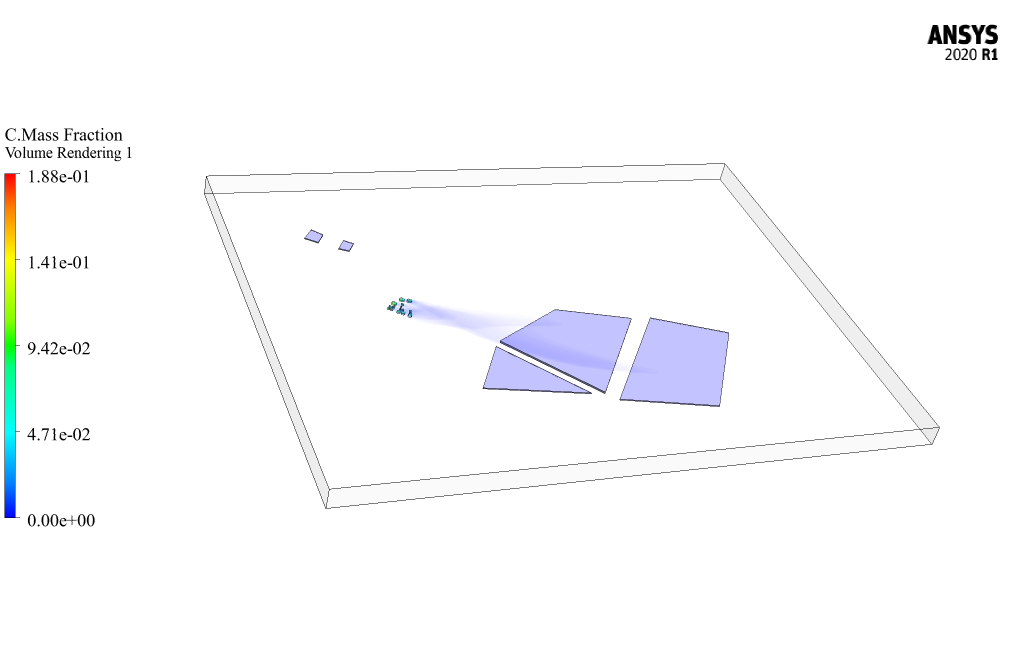
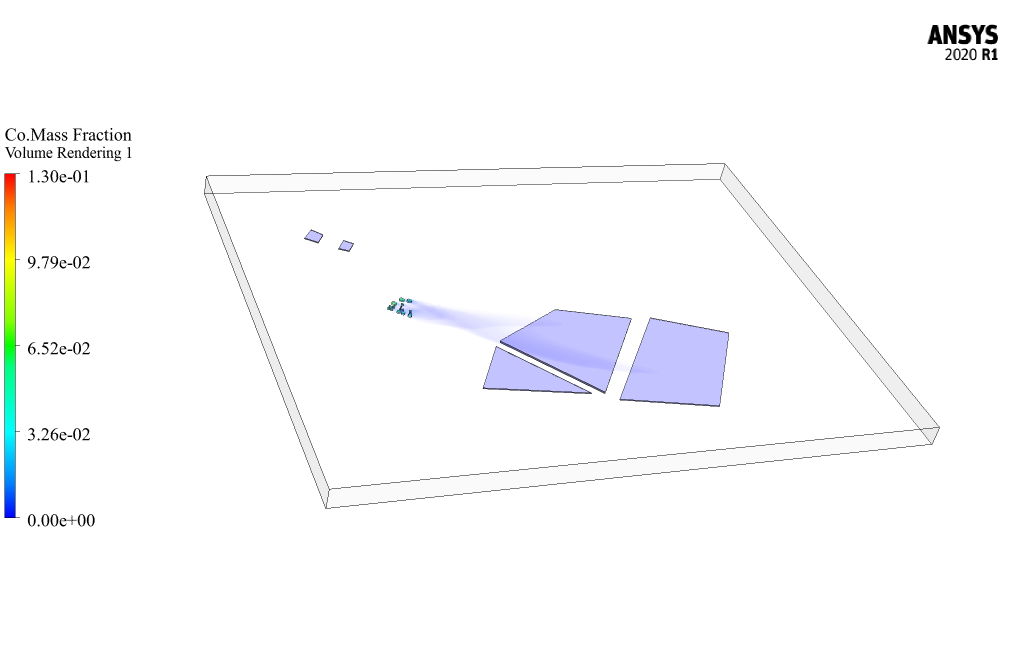
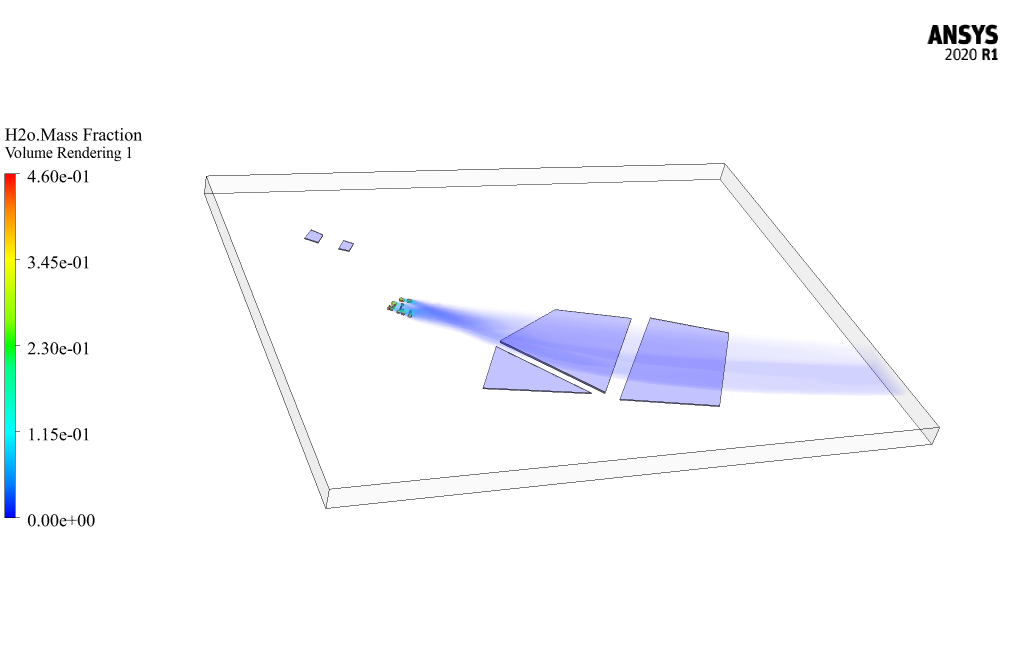
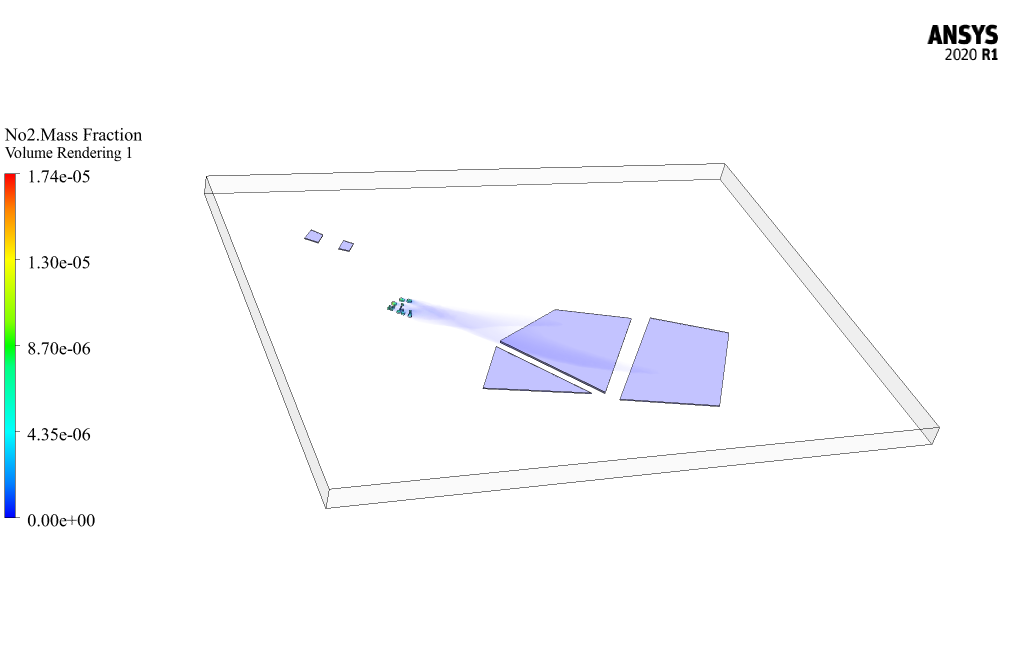
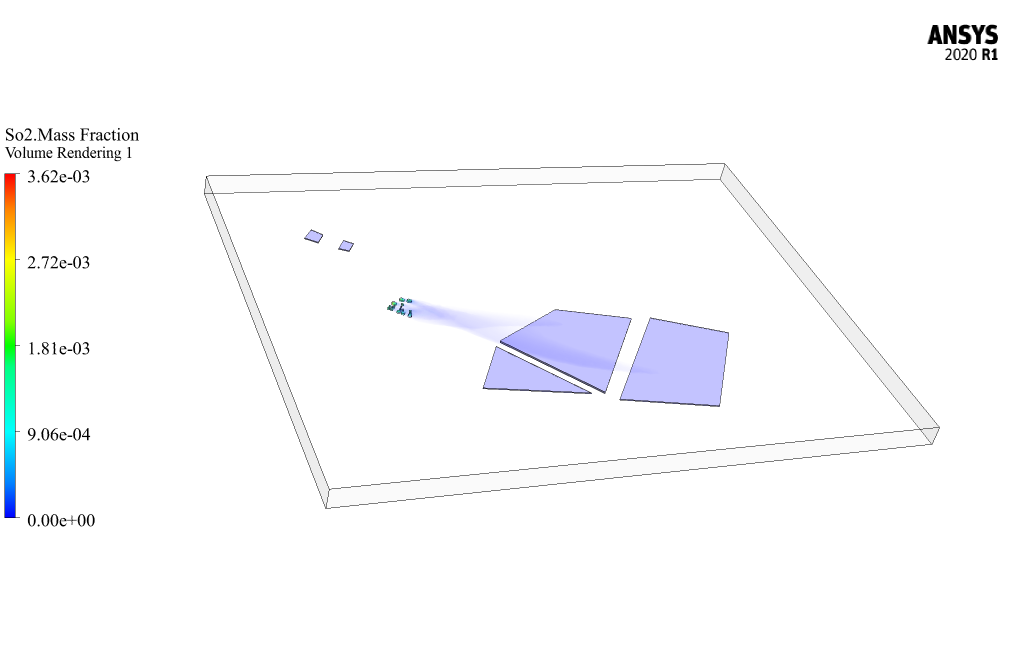
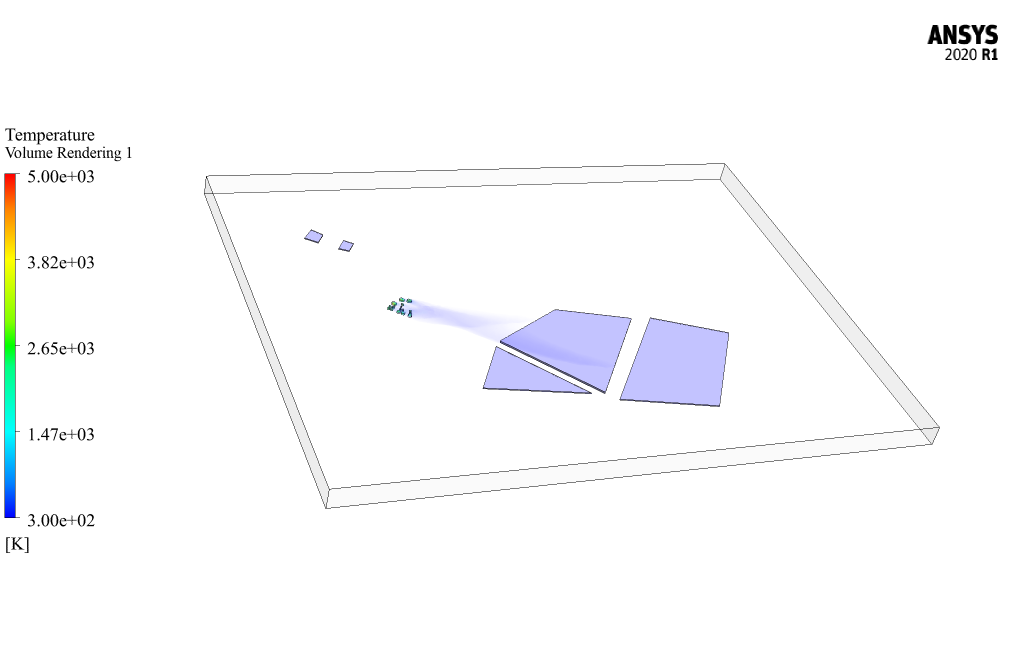
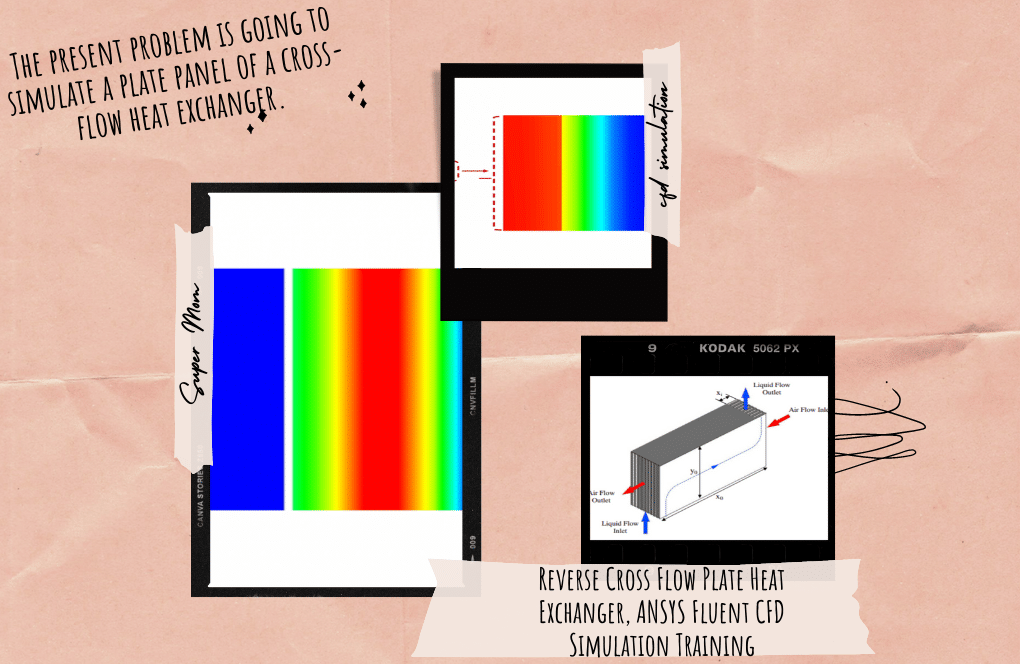
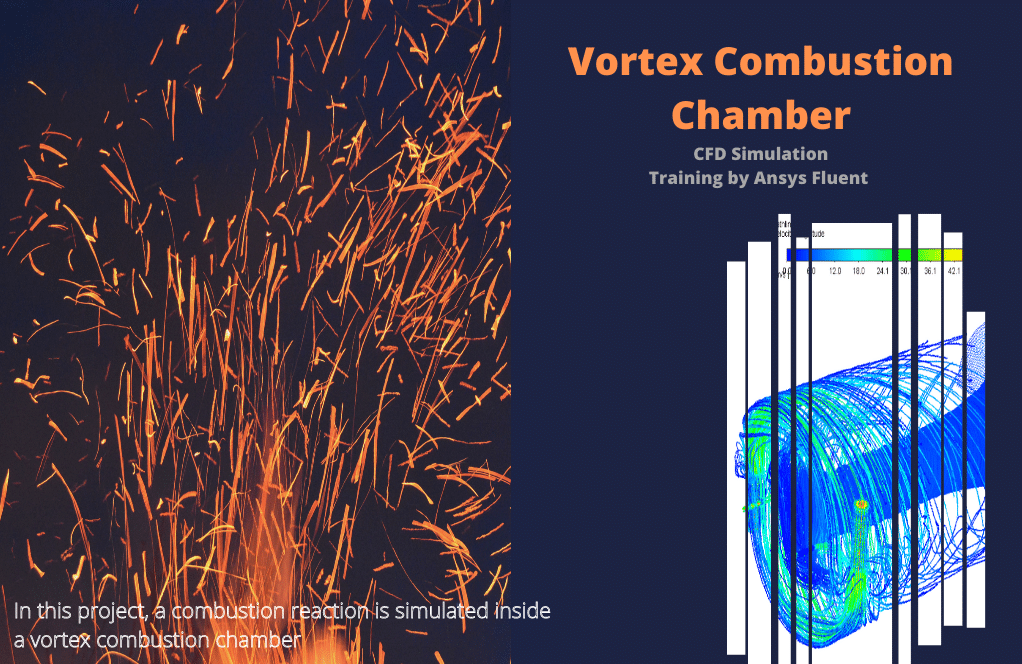


Mr. Rogelio Haag –
I am extremely impressed by how this simulation addresses the critical issue of pollutant dispersion following an oil storage tank explosion. Seeing the comprehensive analysis considering various pollutants and the detailed modeling of the urban environment really emphasizes the importance of CFD studies in public safety.
MR CFD Support –
Thank you so much for your positive feedback! We are glad to hear that you found the simulation useful and relevant to public safety concerns. It’s our goal at MR CFD to provide comprehensive and realistic models to help understand and mitigate potential hazards. We appreciate your interest in our work!
Ken Dare –
Wonderful training material! Learning how to simulate the explosion and pollutant dispersion of oil storage was both challenging and informative. The step-by-step methodology and the detailed description of environment settings made it easier to understand complex physical phenomena involved.
MR CFD Support –
Thank you for your positive feedback! We’re thrilled to hear you found the training material comprehensive and helpful for your understanding of such an important real-life simulation scenario. Please reach out if you have any further questions or need additional learning resources.
Devonte Streich –
This simulation seems very detailed. Can you explain the type of turbulence model used and how it influences the simulation results, especially regarding the dispersion of the pollutants?
MR CFD Support –
We typically employ a turbulence model compatible with the simulation’s purpose. For this particular simulation involving explosion and pollutant dispersion, a realizable k-epsilon or SST k-omega model may be utilized due to their efficiency in representing the mixing and spreading of contaminants. These models help predict the effects of turbulence on the movement of pollutants, influencing pollutant concentration distribution and providing insights into potential environmental impacts.
Roman Koch Sr. –
The training on explosion and pollutant dispersion was insightful. It truly highlighted the complexities and dangers of urban area oil reservoir explosions, capturing both the stress on structures and potentially dire environmental effects. Darkest imaginings have been unveiled by this simulation, but knowing they have been contemplated is oddly reassuring.
MR CFD Support –
We appreciate your reflections on the training content. Understanding these variables is crucial for safety and environmental planning, so we’re glad that the simulation provided you with valuable insights. Thank you for your acknowledgment and thoughtful feedback.
Karolann Koelpin –
The simulation sounds quite detailed. Does it also consider the effect of obstacles like buildings within the residential and industrial areas on the dispersion of pollutants, or does it assume an open area with no obstructions?
MR CFD Support –
In the simulation of the Explosion and Pollutant Dispersion of an Oil Storage Tank, the presence of buildings and other obstructions within the urban landscape can significantly impact pollutant dispersion patterns. Therefore, it’s necessary to model these physical features accurately to predict how pollutants will spread in realistic scenarios. Unfortunately, our dataset doesn’t indicate whether obstructions like buildings have been included in the model. Normally, a complex urban environment would be represented in the computational domain to evaluate the pollutants’ interaction with such features.
Santos Bosco –
The review really highlights the thoroughness of the simulation provided by MR CFD. The realistic setup and the careful consideration of surrounding environmental elements, like residential and industrial areas, show a detailed approach to a sensitive scenario involving explosion and pollutant dispersion. Great job on including weather impact analysis, such as the wind’s influence on pollutants. The knowledge of safety and environmental concern expressed here sets a high precedent in simulation quality.
MR CFD Support –
Thank you so much for your positive feedback and recognition of the level of detail in our explosion and pollutant dispersion simulation. We appreciate your commendation on our approach to include environmental factors and weather impact in our analysis. Your acknowledgment motivates us to continue delivering high-quality and realistic simulations to aid in understanding and mitigating potential hazards. We are grateful for customers like you who appreciate the value of meticulous CFD analysis in addressing real-world problems.
Marvin Murphy Sr. –
Fantastic application of the Species Transport model to an important real-world scenario. The thorough setup and detailed description of the results provide an insightful view of how urban environments could be impacted by such incidents.
MR CFD Support –
Thank you for your positive review! We’re glad to know that you found the simulation relevant and insightful. Our aim is to address critical issues through detailed simulations to help in better understanding the real-world scenarios. We appreciate your feedback.
Kacey Durgan –
The simulation gives a lot of detail – could it also predict the duration it takes for pollutants to disperse in different weather conditions?
MR CFD Support –
Yes, the simulation can predict how different weather patterns will affect pollutant dispersion. By altering parameters like wind speed and direction within the CFD model, we can understand the impact on the duration it takes for pollutants to disperse after an explosion.
Jarod Ullrich –
I just finished this training, and I must say the level of detail in modeling realistic pollution dispersion was impressive. Fantastic work from the MR CFD team!
MR CFD Support –
Thank you for your kind feedback! We’re glad to hear you were impressed with the level of detail and realism in the oil storage tank explosion simulation. Our team strives to deliver quality training that can effectively model complex scenarios. Your compliment means a lot to us!
Prof. Deron Ruecker Jr. –
This product looks very technical. Is this simulation suitable for beginner users in ANSYS Fluent, or should I have advanced knowledge to understand it?
MR CFD Support –
This simulation is quite complex and involves understanding explosions, chemical reactions, and pollutant dispersion. It is recommended that users have a basic to intermediate understanding of ANSYS Fluent and CFD principles before tackling such simulations. However, our training materials are designed to guide users through the process step-by-step, so motivated beginners with a willingness to learn should also be able to follow along.
Hermina Ratke –
Is possible to estimate the safe distance for residential areas from the oil storage tanks based on the simulation results?
MR CFD Support –
Based on the simulation results, it is possible to estimate a safe distance for the residential areas from the oil storage tanks. The dispersion patterns, concentration levels, and wind trajectories modeled can provide insights on the impacted areas and help determine a safety perimeter.
Alexander Rodriguez –
Could this simulation also include the modeling of particulate matter dispersion from the explosion, and can it be used to evaluate the effectiveness of safety measures in such a scenario?
MR CFD Support –
Yes, particulate matter (PM) dispersion can be modeled using the discrete phase model (DPM) in conjunction with species transport to track the trajectory of particles. Effectiveness of safety measures can also be evaluated by simulating various scenarios with different safety implementations and analyzing their impact on the dispersion patterns and concentrations of pollutants.